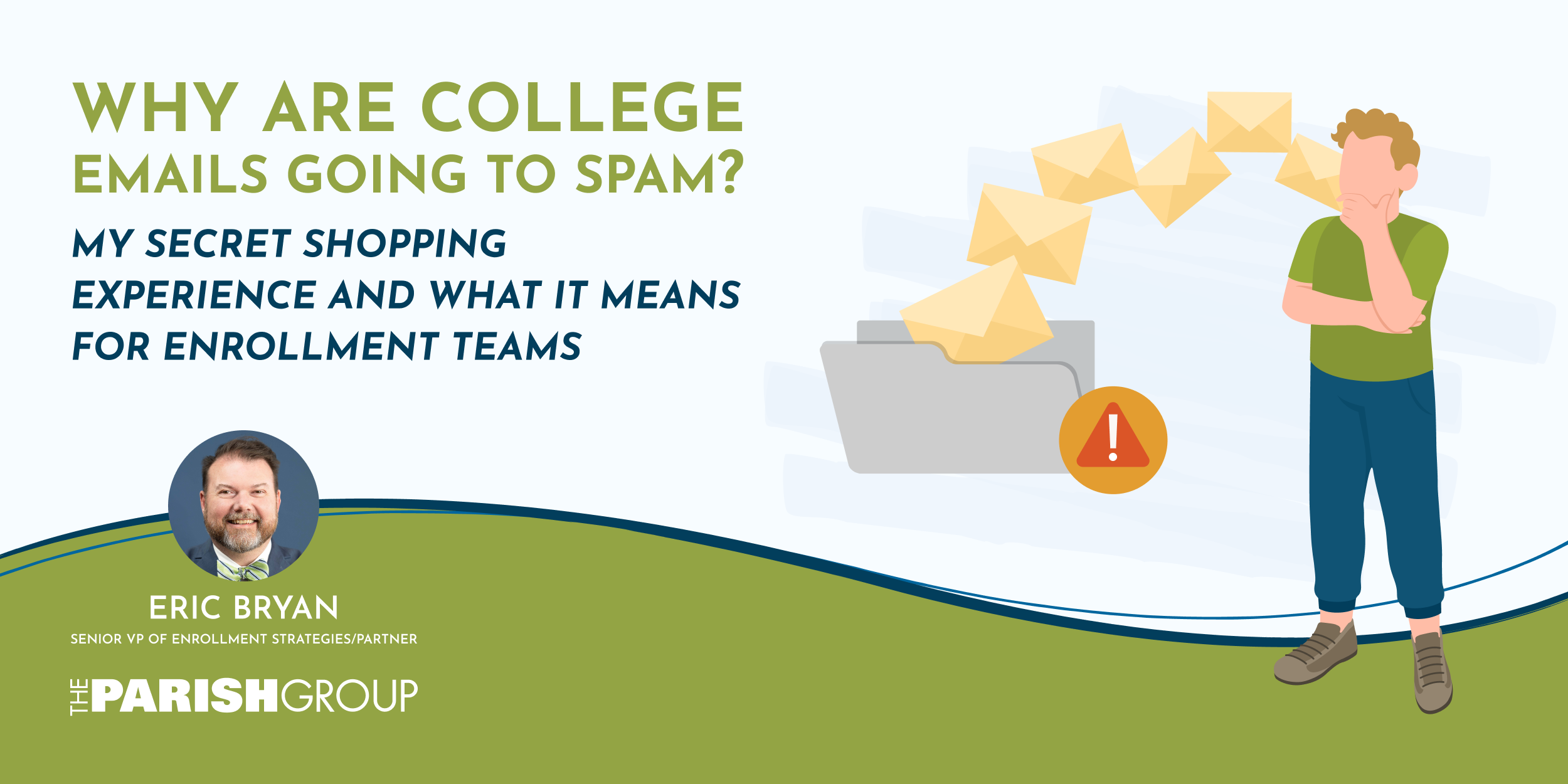
When it comes to higher education marketing, student search is a hot topic. It’s the crucial first step in building a well-rounded incoming class. With so much swirling around predictive models, AI in admissions, and behavioral tracking, it can be tough to separate the valuable insights from the marketing hype.
At TPG, our student search strategies have helped our partner institutions achieve remarkable successes. Our belief informs our practice—that every university has a unique identity and prospective students are no different.
Personalization in Student Search
Look anywhere online right now for tips and tricks on marketing and you’ll find a litany of posts about personalization. Google, Amazon, social media platforms—all of these sites have been taking user data to personalize user experience.
In the past few years, higher ed marketing caught up to the personalization push, and now every institution wants to customize communications to better fit prospective students. In turn, it has spurred the craze on “persona-based” search.
Persona-based marketing (PBM) has been around for years. The higher education marketing industry started adopting this around 2011. But before you jump right in, there are some things to consider.
Especially early in the funnel, there’s a desire to “fill in the blanks” about an inquiry’s story based on what little information they’ve shared. While categorizing inquiries may seem efficient, relying on broad assumptions can result in misguided conclusions with little empirical support.
When we typecast students, we overlook the rich tapestry of their story, which influences their wants and needs. This can lead to missed opportunities and ineffective outreach.
We advocate for a more nuanced understanding of student search where we get to know our prospects as people. This means fighting the urge to become trigger-happy based on that one box a student toggles in the inquiry stages.
We encourage institutions to recognize and celebrate their multifaceted prospective students, and develop strategies that resonate on a personal level, without pigeonholing them into one identifiable aspect.
This tailored approach not only fosters better engagement but also helps institutions attract students who align with their values and mission.
Our goal is to empower you to discern what truly matters in attracting the right students to your institution, ensuring that your recruitment efforts are both effective and authentic.
Noise vs. Valuable Insights
It’s easy to feel overwhelmed in an industry full of conflicting information. With so many voices in the market, it can be difficult to distinguish what’s noise versus what actually deserves your attention.
Let’s walk through a scenario to illustrate the complexities of student search personalization.
Imagine you’re looking to purchase a list of student names in a primary market. Typically, you’ll receive basic information such as email addresses, names, geographic locations, and perhaps intended majors. However, beneath the surface, a host of factors influences each student’s journey, even if they appear similar on paper.
Take Student A and Student B, for example:
- Student A is a child of a single parent. They’ve played intramural basketball here and there, and indicated an interest in studying chemistry.
- Student B is a lifelong runner and active recruit for your school’s track-and-field team. They’ve also checked chemistry as their intended major.
At first glance, it’s easy to want to lump these students into the same group: athletes that want to study chemistry. Persona-based messaging would tell us to send emails about Parish U’s state-of-the-art chem labs and incredible athletic facilities.
The failure of this approach is that it overlooks their unique background and motivations. Student A’s experience as a child of a single parent may impact the influence financial aid has on their college search. Sure, high-end athletic facilities are great, but will they be able to afford your institution?
Similarly, pigeonholing Student B as “student athlete” may mean they miss engaging communications that rounds out their understanding of Parish U.
And who’s to say either of these students will actually pursue chemistry once they’ve enrolled? It may be smart to familiarize them with the other programs at your college or university.
We don’t want to overlook the unique circumstances student’s carry with them. While the intent is personalization, relying solely on persona-based messaging can lead to generalizations and assumptions that potentially miss the mark.
How Behavioral Data Comes Into Play
Behavioral data refers to the insights students consciously or implicitly reveal through their interactions and activities.
This includes a wide array of information, such as demographics, geographic location, and their digital footprint. Every click, page visit, and social media interaction adds to this mosaic of data, and helps institutions better understand student preferences and behaviors.
In our previous blog, we discussed how this data can be a game changer in student search. By analyzing behavioral patterns, institutions can tailor their outreach efforts to make them more relevant and engaging.
Understanding what drives prospective students can help you create strategies that resonate, ultimately leading to a stronger and more diverse incoming class.
Leveraging Slate
A strong student search strategy requires a strong CRM. Powerful CRMs like Slate can make this process easier.
As we’ve emphasized, don’t let the inquiry form become the be-all-end-all. There are other, more subtle ways students indicate what they need from you.
This is where Slate’s Ping Data tool comes into play. With Ping Data, you gain valuable insights into student behaviors and interests that go beyond basic demographics.
Slate Ping Data tells you that Student A has visited your institution’s Financial Aid Calculator multiple times in the past month. Clearly, this behavior indicates their interest in your school and their worries about affording it.
Student B, our all-star athlete recruit, explored your chemistry page, as their inquiry form indicated they would. But Slate Ping Data shows they’ve hit up your school’s choir page quite a lot as well. Maybe it’s time to send them a performing arts postcard…
If you had generalized these students’ interests from the start, it would be nearly impossible to engage them on a multidimensional level. Without the specific insights provided by Ping Data, your outreach misses what they’re not telling you in a form.
Treating students like they fit into a cookie-cutter mold is a surefire way to ensure you have a cookie-cutter institution.
The New Age of Student Search with The Parish Group
The Parish Group is proud to be one of the first higher education marketing firms to leverage Slate as an in-house search engine.
That means we can significantly enhance the effectiveness of your student search efforts by leveraging information provided from Slate Ping Data directly into search strategy and execution.
With enhanced reporting structures, you can easily analyze data and track key metrics to refine your strategies over time. Additionally, Slate facilitates seamless communication to your institution’s instance, ensuring that your team can collaborate efficiently and respond promptly to students’ needs.
If you want your search strategy to go beyond the persona-based typecasting, The Parish Group is at your service. Call us at 828.505.3000 or email us at success@parishgroup.com









